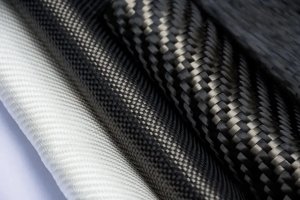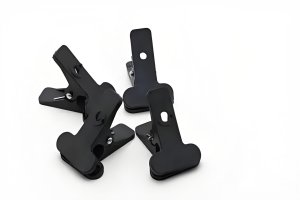Introduction
If you’ve ever worked on a CNC project—whether in a garage workshop or a full-scale production facility—chances are you’ve handled an aluminum plate. I remember the first time I used one for a small electronics enclosure. I thought it would be a breeze, but choosing the right aluminum plate turned out to be trickier than expected. That moment kicked off my deep dive into aluminum plate selection, machining, and sourcing.
This guide is built from my personal experience, hard-earned lessons, and conversations with engineers, suppliers, and machinists. Whether you’re sourcing aluminum plate for prototypes, end-use parts, or just trying to understand what makes one grade better than another, you’re in the right place.
We’ll break down the aluminum plate landscape—from what it is, to how to choose it, where to buy it, and how to make sure it works for your CNC project. I’ll also share real-world use cases and a few data-backed tips to help you get better results.
Understanding Aluminum Plates for CNC Projects
What is an Aluminum Plate?
An aluminum plate is a flat, rolled piece of aluminum that’s typically 6mm (0.25 inch) thick or more. It’s widely used in CNC machining due to its excellent strength-to-weight ratio, corrosion resistance, and ease of machining.
Aluminum plates come in a variety of grades, finishes, and tempers, each tailored for specific purposes—whether you’re building aircraft parts, consumer electronics, automotive components, or custom enclosures.
Why Aluminum Plate is Ideal for CNC Machining
When it comes to CNC machining, aluminum plate stands out. Here’s why:
- High machinability: It cuts cleanly, produces minimal burrs, and allows for high-speed toolpaths.
- Thermal conductivity: Ideal for heat sinks or components requiring thermal management.
- Anodizing compatibility: Provides functional and aesthetic surface options.
- Available in many alloys: You can find a suitable aluminum plate whether you need strength, corrosion resistance, or weldability.
I’ve personally machined everything from small hobby enclosures to large aerospace brackets out of aluminum plates, and nothing beats the predictability and versatility of this material.
Common Grades of Aluminum Plate
Here’s a quick comparison table of commonly used aluminum plate grades in CNC machining:
| Grade | Machinability | Corrosion Resistance | Strength (Tensile, MPa) | Weldability | Anodizing Quality |
|---|---|---|---|---|---|
| 6061-T6 | Excellent | Good | ~290 MPa | Excellent | Good |
| 7075-T6 | Good | Moderate | ~570 MPa | Poor | Excellent |
| 5052-H32 | Good | Excellent | ~215 MPa | Excellent | Fair |
| 2024-T3 | Fair | Poor | ~470 MPa | Poor | Good |
| MIC-6 (Cast Plate) | Excellent | Good | ~241 MPa | Fair | Good |
| 5083-H116 | Moderate | Excellent | ~317 MPa | Good | Fair |
As a rule of thumb: 6061 is the go-to for general-purpose CNC work. For aerospace or high-strength parts, 7075 and 2024 offer performance at a cost. 5052 and 5083 are best when corrosion resistance is a priority.
Standard Sizes and Thicknesses
Most suppliers carry standard sizes like 12”x12”, 24”x24”, or full sheets (48”x96”). Thickness usually ranges from 0.25” to 6”, though custom cuts are widely available. I usually order pre-cut 12″x24″ blanks for prototyping, which reduces prep work and speeds up setup.
Here’s a table summarizing common aluminum plate thicknesses and use cases:
| Thickness (inches) | Common Use Case | CNC Tooling Required | Material Stability |
|---|---|---|---|
| 0.25″ (6.35mm) | Electronics covers, signage | Light duty | High |
| 0.5″ (12.7mm) | Brackets, mounting plates | Medium duty | High |
| 0.75″ (19mm) | Chassis, structural parts | Heavy-duty | Very High |
| 1.0″ (25.4mm) | Tooling plates, machine beds | Heavy-duty | Very High |
| 2.0″+ (50mm+) | Aerospace, mold base | Advanced machining | Exceptional |
How to Choose the Right Aluminum Plate for Your CNC Project
Choosing the right aluminum plate can make or break your CNC project. I’ve learned this the hard way—once, I used a 7075 plate for a small enclosure, and while the part looked amazing, the cost and tool wear were totally unnecessary. It taught me to match material to the job, not just pick the strongest alloy.
Let’s walk through how to make the right choice based on your needs.
Key Selection Factors
When selecting an aluminum plate for CNC machining, here are the factors I always consider:
- Strength Requirements
If you’re machining structural components like brackets or mounts, you’ll want a high tensile strength plate like 7075-T6. For general enclosures or light-duty parts, 6061-T6 is more than sufficient. - Corrosion Resistance
For outdoor or marine applications, 5052 or 5083 is ideal due to their saltwater resistance. I’ve used 5052 for parts on a custom drone used for coastal monitoring, and it held up great in wet environments. - Machinability
CNC efficiency matters. MIC-6 cast plate or 6061 machines beautifully—less wear on tools, faster cycle times, better surface finishes. - Weldability
Planning to weld your part? Stay away from 7075 and 2024, which are prone to cracking. 6061 and 5052 weld cleanly and reliably. - Anodizing & Finish Quality
If appearance or protection matters, look for anodizing-friendly grades like 6061 and 7075.
CNC Machinability Comparison
I put together this table from my personal notes and shop experience. It’ll give you a clearer picture of how each grade performs in real-world CNC jobs.
| Aluminum Plate Grade | Machinability (1-10) | Surface Finish Quality | Tool Wear | Chip Control |
|---|---|---|---|---|
| 6061-T6 | 9 | Very Good | Low | Excellent |
| 7075-T6 | 7 | Excellent | Moderate | Good |
| 5052-H32 | 8 | Good | Low | Excellent |
| MIC-6 | 10 | Excellent | Very Low | Outstanding |
| 2024-T3 | 6 | Fair | High | Poor |
| 5083-H116 | 7 | Good | Moderate | Good |
Matching Plate to Project Type
I’ve outlined some of the most common CNC project types and my recommended aluminum plate choice for each:
| CNC Project Type | Recommended Grade | Reason |
|---|---|---|
| Electronics enclosure | 6061 or MIC-6 | Easy to machine, good surface |
| Lightweight drone frame | 5052 or 6061 | Corrosion resistant, weldable |
| Structural bracket | 7075 | High strength-to-weight |
| Fixture plate | MIC-6 | Flat, stable, easy to tap |
| Outdoor signage | 5052 or 5083 | Excellent weather resistance |
| Mold base | 7075 or MIC-6 | High strength and stability |
If you’re unsure, 6061-T6 is the safest bet. It performs well in nearly every category and is widely available.
Common Mistakes I’ve Made (So You Don’t Have To)
- Choosing 7075 when 6061 would do — great alloy, but too expensive for basic parts.
- Using 2024 without realizing it corrodes fast — beautiful cut, but it oxidized quickly.
- Not checking flatness on rolled plate — ended up with parts warped after machining.
- Ignoring finish specs — I once got a batch that couldn’t anodize evenly due to impurities.
Pro Tip: Consider Precision Cast Plates for Flatness
If your project needs a perfectly flat surface—like a fixture plate—MIC-6 is worth the premium. It comes pre-milled on both sides and is stress-relieved, so it won’t warp during machining. I used MIC-6 for a modular CNC bed and never had to resurface it.
Real-World Applications of Aluminum Plates in CNC Projects
One of the things I enjoy most about working with aluminum plate is how universal it is. From aerospace components to laptop frames, it’s everywhere. In my own workshop, I’ve used aluminum plate to build drone parts, control panel mounts, and even custom tool holders. What surprised me is how the same material—if selected wisely—can adapt to totally different industries.
This section dives into how various industries use aluminum plates in CNC projects, including what types of alloys are typically used, why they work well, and a few examples I’ve come across or worked on directly.
1. Consumer Electronics
Aluminum plates are widely used in consumer electronics for cases, internal frames, and thermal management.
- Use Cases: Laptop enclosures, heat sinks, smartphone casings
- Preferred Grades: 6061-T6, 5052-H32
- Why: These grades provide a clean finish, are easy to anodize, and are lightweight but durable.
I once helped a friend build a custom CNC-machined tablet chassis using 6061. The surface came out smooth, and after black anodizing, it looked nearly indistinguishable from a MacBook part.
2. Aerospace Industry
Aerospace demands high strength and low weight, making aluminum plate a critical material.
- Use Cases: Structural brackets, wing ribs, control linkages
- Preferred Grades: 7075-T6, 2024-T3
- Why: These grades offer exceptional tensile strength and fatigue resistance, crucial for aircraft components.
One aerospace subcontractor I met in San Diego uses 7075 plates extensively in their CNC mills. Their advice? Don’t skimp on toolpath planning—7075 is hard, and tool wear adds up fast.
3. Automotive Industry
From body panels to suspension components, aluminum plates are widely used in modern car manufacturing.
- Use Cases: Engine covers, structural reinforcements, dashboards
- Preferred Grades: 6061, 5083
- Why: 6061 is versatile and strong; 5083 adds corrosion resistance for underbody components.
I’ve used 5083 aluminum plate to make a motorcycle luggage rack. It was light, strong, and never showed signs of rust even after months on the road.
4. Robotics and Automation
This is where I spend a lot of time. Robotics projects often rely on custom CNC brackets, sensor mounts, and frames, all built from aluminum plate.
- Use Cases: Structural arms, mounting bases, linear actuator platforms
- Preferred Grades: 6061, MIC-6
- Why: 6061 offers balance; MIC-6 gives dimensional stability when precision counts.
For one robotics competition, our team machined every load-bearing component out of MIC-6. Zero warping, perfect tap-holding, and saved tons of recalibration time.
5. Marine and Outdoor Equipment
Corrosion is the enemy here. Aluminum plate grades with marine-grade resistance shine in this space.
- Use Cases: Boat components, marine brackets, outdoor signs
- Preferred Grades: 5052, 5083
- Why: Excellent corrosion resistance, even in saltwater environments.
A client I worked with builds fishing drones. He only uses 5052 for all external housing components—solid, corrosion-proof, and easy to cut on his mid-tier CNC router.
6. Mold Making and Tooling
Toolmakers rely heavily on flat, stable aluminum plates that hold up to repeated machining.
- Use Cases: Mold bases, jigs, dies, vacuum plates
- Preferred Grades: MIC-6, 7075
- Why: MIC-6 is pre-machined and stress-relieved; 7075 offers max strength where needed.
I’ve cut cavity molds from MIC-6. It’s amazing how little rework was needed. The stability saved hours of surfacing and scrap.
Application Summary Table
| Industry | Common Use Cases | Preferred Aluminum Plate Grades | Key Benefits |
|---|---|---|---|
| Electronics | Enclosures, heat sinks | 6061, 5052 | Easy to finish, lightweight |
| Aerospace | Structural parts | 7075, 2024 | High strength-to-weight |
| Automotive | Chassis, brackets | 6061, 5083 | Tough + corrosion resistant |
| Robotics | Arms, frames | 6061, MIC-6 | Precise and durable |
| Marine/Outdoor | Brackets, mounts | 5052, 5083 | Saltwater resistance |
| Tooling | Molds, dies | MIC-6, 7075 | Flat, machinable, stable |
What I’ve learned is this: aluminum plate is never one-size-fits-all. Every CNC project has different stress, environmental, and precision demands. Picking the right grade isn’t just smart—it saves time, reduces waste, and increases your ROI.
Where and How to Buy Aluminum Plates for CNC Machining
Buying aluminum plate might sound straightforward—until you realize just how many variables are involved: grade, thickness, finish, tolerances, supplier reliability, shipping time, and even how flat the plate really is. I’ve made mistakes here, from ordering the wrong alloy to receiving warped plates that wrecked an entire prototype.
This section is your shortcut. I’ll share where to buy aluminum plate, how to evaluate suppliers, and the questions I always ask before placing an order—whether it’s a $50 hobby sheet or a $2,000 bulk supply.
Online vs. Local: Where to Start?
There are two main ways to source aluminum plates for CNC:
🔹 Online Distributors
These include suppliers like:
- OnlineMetals.com
- Midwest Steel & Aluminum
- Amazon (for small plates)
- McMaster-Carr
- Xometry or Fictiv (custom cut plates)
Pros:
- Convenient
- Fast delivery
- Custom cut-to-size options
Cons:
- Higher cost per unit
- Sometimes limited grade availability
🔹 Local Metal Suppliers / Yards
I’ve had great experiences buying aluminum plate locally. You can inspect the material and often negotiate bulk pricing.
Pros:
- Lower prices in bulk
- Immediate inspection
- No shipping damage
Cons:
- Limited hours
- May require a business account or minimum order
Buying Tips: What I Look For in a Supplier
Over time, I developed a checklist that helps avoid bad batches or delivery delays:
| Criteria | Why It Matters | What to Ask |
|---|---|---|
| Grade Verification | Wrong alloy ruins machining | “Can you confirm this is certified 6061-T6?” |
| Flatness Guarantee | Prevents warped parts | “Is this cast plate or rolled? Can I get flatness tolerance?” |
| Surface Condition | Affects anodizing | “Is it mill finish or pre-finished?” |
| Cutting Accuracy | Saves post-processing | “How accurate are your cuts? ±0.5mm?” |
| MOQ (Minimum Order) | Budget planning | “What’s the minimum order per thickness?” |
| Lead Time | Affects project schedule | “What’s the typical delivery time for 24x24x0.5” 7075?” |
Common Purchase Sizes & Prices
To help you plan, here’s a comparison of typical sizes, alloys, and average pricing I’ve seen in the U.S. (as of early 2025):
| Size (inches) | Thickness | Alloy | Supplier | Approx. Price (USD) |
|---|---|---|---|---|
| 12×12 | 0.25″ | 6061-T6 | OnlineMetals | $28 – $35 |
| 24×24 | 0.5″ | 5052-H32 | McMaster-Carr | $85 – $100 |
| 24×36 | 1.0″ | MIC-6 Cast | Midwest Steel | $180 – $220 |
| 48×96 (full sheet) | 0.25″ | 6061-T6 | Local Supplier | $280 – $340 |
| Custom cut 3pcs | 0.75″ | 7075-T6 | Xometry | $300+ (with machining) |
Prices vary with market aluminum cost—always request a quote.
Mistakes to Avoid (Learned Firsthand)
- Not confirming alloy certification – I once received a mislabeled 6061 that turned out to be 3003. It gummed up my end mills and ruined surface finish.
- Over-ordering full sheets – Unless you’re running a production batch, order what you need. Full sheets are heavy, hard to store, and expensive to ship.
- Ignoring cut tolerances – I’ve had CNC setups misalign because the pre-cut blank was off by 1–2mm.
- Forgetting surface condition – Mill-finish aluminum plate needs prep before anodizing or bonding.
My Favorite Buying Strategy
When prototyping, I usually:
- Start with small pieces from OnlineMetals to test cuts.
- Validate design and machining.
- Move to local suppliers for bulk aluminum plate—cheaper and easier to pick up.
For tight-tolerance work, I always prefer MIC-6 cast plate, even though it’s more expensive. Its flatness saves hours in setup and finishing.
Red Flags to Watch For
- No material traceability
- Unbranded or generic alloys
- Poor packaging (especially for large/thick plates)
- “Too good to be true” prices
If you’re serious about your CNC work, trust matters. Build a relationship with a reliable aluminum plate supplier—it pays off.
FAQ
Over the years, I’ve answered dozens of questions about aluminum plate—in online forums, at makerspaces, and even at supplier counters. These questions almost always boil down to practical, real-world concerns. I’ve gathered the most common ones here and answered them based on experience, backed by conversations with CNC machinists, engineers, and suppliers.
Let’s get into it.
❓ What’s the best aluminum plate for CNC machining?
In most general-purpose CNC projects, 6061-T6 aluminum plate is the best balance of strength, machinability, price, and availability. If you need ultra-flat material for fixture plates or mold bases, I recommend MIC-6 cast aluminum plate.
❓ Can I CNC very thin aluminum plate (e.g., 1/16″ or 1.5mm)?
Yes, but you need to adjust your feeds and speeds carefully. Thin aluminum plates are prone to chatter and vibration during cutting. I recommend:
- Using a vacuum fixture or double-sided tape
- High spindle speeds with shallow depth-of-cut
- Single-flute end mills to reduce load and improve chip clearance
I once tried cutting a 1.5mm plate without fixturing it properly—it bent mid-job, ruining both the part and my end mill.
❓ What thickness of aluminum plate should I use?
It depends on the application. Here’s a basic rule of thumb:
| Application | Recommended Thickness |
|---|---|
| Electronics housing | 0.125″ – 0.25″ |
| Brackets / Mounts | 0.25″ – 0.5″ |
| Structural Parts | 0.5″ – 1.0″ |
| Tooling Plates / Bases | 1.0″ – 2.0″+ |
Always factor in the load your part will bear and whether you’ll machine features that weaken structural integrity.
❓ Can I anodize all aluminum plates?
Most aluminum plates can be anodized, but the quality depends on the alloy. 6061 and 7075 anodize well and offer a consistent finish. 5052 can also be anodized, but the result is often less uniform. MIC-6 can be anodized with decent results, but cast surfaces may vary slightly in tone.
I’ve had the best finishes with 6061 after bead blasting prior to anodizing.
❓ How flat are aluminum plates from suppliers?
That depends on the type:
- Rolled aluminum plate (like most 6061 or 5052) may have minor bowing or warping.
- Cast aluminum plate (like MIC-6) is precision-machined on both sides and stress-relieved—it’s extremely flat.
If flatness is critical, always specify “cast aluminum plate” and check for a flatness tolerance spec.
❓ What’s the difference between aluminum sheet and aluminum plate?
Thickness. Generally:
- Aluminum sheet is thinner than 0.25″ (6.35mm)
- Aluminum plate is 0.25″ or thicker
For CNC projects involving structural parts or tapped holes, I always go with plate.
❓ Can I weld aluminum plate before or after CNC machining?
Yes—but choose your alloy carefully. 6061 and 5052 weld well. 7075 and 2024 do not. Welding also affects the heat-treated properties of the aluminum, so avoid welding precision-machined surfaces unless you re-machine them afterward.
❓ Does aluminum plate warp during CNC machining?
It can. Warping is more likely if:
- You remove a lot of material unevenly
- You don’t secure the plate properly
- The plate isn’t stress-relieved
I recommend:
- Face-milling both sides to balance stress
- Using low-depth passes
- Letting the part rest between roughing and finishing
❓ Can I use woodworking CNC machines to cut aluminum plate?
Surprisingly, yes—with limitations. I’ve used a high-rigidity hobby CNC router with a spindle upgrade to cut 6061. You’ll need:
- A strong workholding solution
- Slow feed rates
- Lubrication (like WD-40 or misting systems)
- Suitable carbide bits
For thick plates or tight tolerances, stick with a proper metal CNC mill.
❓ Where can I buy small quantities of aluminum plate?
Try:
- OnlineMetals.com
- McMaster-Carr
- Amazon (for small blanks)
- eBay (for budget pieces or leftovers)
- Local welding supply or metal yards
I often keep a few 12″x12″x0.25″ plates in the shop for fast prototyping—they’re easy to cut, test, and iterate with.
Conclusion
If you’ve made it this far, you now know more about aluminum plate than 95% of people who start CNC machining.
To recap:
- Aluminum plate is a go-to material in CNC for a reason: it’s versatile, strong, and machinable.
- The right grade selection can save you money, tools, and time—especially when chosen based on project-specific needs.
- Real-world applications span everything from aerospace to hobby robotics.
- Knowing where to buy, what questions to ask, and how to check the material can prevent expensive mistakes.
- And finally, having a few key tools and resources on hand makes working with aluminum plate not just easier—but more fun.
If you’re starting your first CNC project, I recommend beginning with 6061. It’s forgiving, available, and widely supported in tutorials and forums. If you’re more advanced, consider MIC-6 or 7075 for high-performance builds.
CNC machining is already complex—choosing the right aluminum plate shouldn’t be. I hope this guide has helped you feel more confident and prepared to start (or improve) your next aluminum project.
Thanks for reading—and feel free to reach out if you have questions or want to share your own experience. Let’s keep making better parts, one plate at a time.
Further Reading & Authoritative References
- Aluminium Alloy – Wikipedia
A foundational explanation of aluminum alloys, including classification by series, mechanical characteristics, and common use cases.
🔗 https://en.wikipedia.org/wiki/Aluminium_alloy - Aluminum CNC Machining — A Beginner’s Guide
A practical article from Dassault Systèmes outlining key benefits of machining aluminum, with a focus on applications and processes.
🔗 https://www.3ds.com/make/solutions/blog/aluminum-cnc-machining - CNC Machining Aluminum Alloys: A Practical Guide
Industrial Metal Service offers insights into choosing the right aluminum plate for CNC, with real-world performance tips.
🔗 https://industrialmetalservice.com/metal-university/finding-aluminum-for-cnc-machining/ - Aluminium Alloy for CNC Machining
Engineering Product Design explores alloy mechanical data and alloy selection for precision CNC work.
🔗 https://engineeringproductdesign.com/knowledge-base/aluminium-alloy-for-cnc-machining/ - Material Tips for Optimizing CNC Machining of Aluminum Plate
TCI Precision Metals shares tips on selecting and preparing aluminum plates to improve CNC quality and efficiency.
🔗 https://tciprecision.com/material-tips-for-optimizing-cnc-machining-of-aluminum-plate/ - The Guide to CNC Machined Aluminum Parts
MakerVerse outlines the advantages of using aluminum in CNC work and gives best-practice recommendations.
🔗 https://www.makerverse.com/resources/cnc-machining-guides/the-guide-to-cnc-machined-aluminum-parts/
Other Articles You Might Enjoy
- How to Polish Aluminum Parts in Precision Machining: A Professional Workflow Guide
Introduction I’ve worked in industrial manufacturing for over a decade. One of the biggest production bottlenecks I've faced is achieving quality surface finishes without disrupting manufacturing speed. Aluminum polishing is…
- Aluminum Square Tubing for CNC Projects: From Material Choice to Precision Cutting
Introduction When I first started getting into CNC machining, I experimented with a bunch of different materials — wood, steel, plastics. But over time, aluminum square tubing became my default choice. It's…
- 80/20 Aluminum Machining: From Standard Profiles to Precision Structures
Chapter 1:Introduction Why 80/20 Aluminum and CNC Are the Perfect Match? I first came across 80/20 Aluminum a few years back, working on a small automation project. At the time, I was…
- Aluminum Oxide Formula Explained: A Machining Guide to Al₂O₃ Basics
Introduction Welcome to my comprehensive exploration of the aluminum oxide formula. In this guide, I’ll walk you through some of the basics of aluminum oxide, or Al₂O₃, often highlighted in…
- Is Aluminum Magnetic? Your Machining Guide to Aluminum Basics
Introduction: Why Care About Aluminum’s Magnetism? I’ve always been curious about how materials like aluminum shape the stuff we use every day—car parts, phone cases, even airplane wings. One question…
- 6061 Aluminum in Machining: Your Guide to Precision and Performance
Introduction: The Perfect Pairing of 6061 Aluminum and CNC I’ve always been fascinated by how everyday objects—like car parts or phone casings—start as raw materials and end up as precision-engineered…
- The Ultimate Guide to Anodized Aluminum Machining: Properties, Processes, and Applications
Chapter 1: Introduction to Anodized Aluminum Anodized aluminum is not just aluminum with a colorful finish. It is aluminum that has been treated through an electrochemical process to form a…
- Aluminum Angle Uncovered: Tips for Machining, Industry Application, and Beyond
Introduction: Unique Advantages of Aluminum Angle I’ve always been fascinated by the lightweight properties of aluminum angle and the sheer range of possibilities it opens up for different industries. Aluminum…
- Billet Aluminum Unlocked: Expert Machining Techniques and Real-World Applications
Introduction: Why Billet Aluminum Matters in Machining I’ve worked with various metals and alloys, but billet aluminum has always stood out for its potential and versatility. Billet aluminum refers to…






